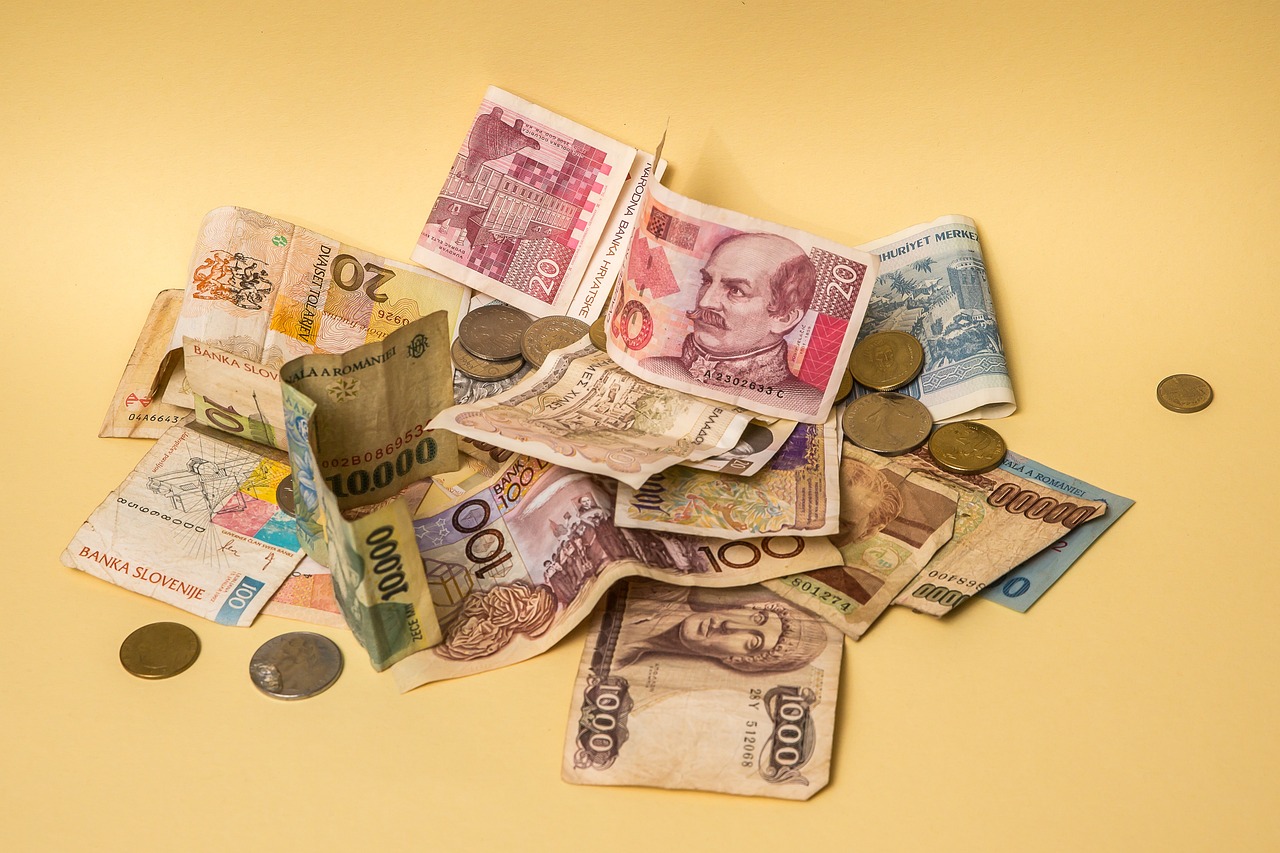Unleashing the Power of Prepaid Visa Cards: The Answers to Your Top 9 Questions!
GPT_Global - 2024-10-03 22:30:13.0 491
Are there any age restrictions for sending money to a prepaid Visa card?
Remittance is an important aspect of the financial industry, allowing people to send money across borders to support their loved ones or conduct business. With the rise of prepaid Visa cards as a popular way to receive funds, many may wonder if there are any age restrictions when it comes to sending money to these cards.
In general, there are no specific age restrictions for sending money to a prepaid Visa card. However, there are some regulations and guidelines that must be followed depending on the country where the transaction is taking place.
For example, in the United States, individuals under the age of 18 may not be able to legally open a prepaid card account on their own. In this case, a parent or legal guardian may have to open the account and add funds on behalf of the minor. However, once the card is set up, anyone can send money to it regardless of their age.
Similarly, in other countries, there may be age restrictions for opening a prepaid card account. It is important to research the laws and regulations of the country where the recipient is located before sending money to a prepaid Visa card.
Another factor to consider is the source of the funds. For instance, if the sender is a minor, they may not be able to send money from their own bank account without parental consent or involvement. This is why it is important to understand the laws and regulations surrounding underage banking and financial transactions in the applicable countries.
Overall, while there may not be age restrictions for sending money to a prepaid Visa card, it is important to be aware of any laws and regulations that may apply to the sender's age and the country where the recipient is located. This will ensure a smooth and legal process for all parties involved in the remittance transaction.

How can I track the status of a money transfer to a prepaid Visa card?
Tracking the status of a money transfer to a prepaid Visa card is an important aspect of managing your remittance business. By providing this service, you can offer peace of mind to your customers by keeping them informed about the progress of their transfers. Here are a few ways to track the status of a money transfer to a prepaid Visa card:
1. Online Tracking: With advancements in technology, most remittance companies now offer online tracking options. Customers can simply log onto the company's website and enter their transaction number or other relevant information to check the status of their transfer. This not only enables customers to monitor their transfers in real-time but also increases transparency and trust in your services.
2. Mobile App Tracking: Another convenient option for customers is tracking through a mobile app. Remittance companies that have their own mobile apps allow customers to easily track the status of their transfers on their smartphones. This is especially helpful for customers who are always on the go and might not have access to a computer at all times.
3. Customer Support: If a customer is unable to track their transfer online or through a mobile app, they can always reach out to your customer support team for assistance. Many remittance companies have dedicated customer support hotlines or live chat options where customers can inquire about the status of their transfers and receive timely updates.
By offering these tracking options, you can enhance the overall customer experience and build loyalty towards your remittance business. Customers will appreciate the convenience and transparency of being able to track their money transfer to a prepaid Visa card, leading to repeat business and positive word-of-mouth recommendations. Remember to always communicate the estimated delivery time of the transfer and provide updates in case of any delays to ensure customer satisfaction.
Do I need to activate a prepaid Visa card before receiving a money transfer?
If you have received a prepaid Visa card as a method of receiving a money transfer from a remittance service, you may be wondering if you need to activate the card before you can use it. The short answer is no, you do not need to activate the card before receiving the money transfer. Prepaid Visa cards are typically ready for immediate use upon receipt. However, there are a few things to keep in mind when using a prepaid Visa card for a remittance transaction.
Firstly, it is important to check the expiry date of the card. If the card has already expired, you will not be able to receive the money transfer and will need to request a replacement card. Additionally, if the card has been damaged or tampered with, it may not work for the money transfer. In these cases, it is best to contact the remittance service provider for assistance.
Another thing to consider is the amount of funds that can be loaded onto the prepaid Visa card. Most prepaid cards have a maximum balance limit, which may not be enough to receive large money transfers. If your money transfer exceeds the maximum balance limit, you may need to provide an alternative method of receiving the funds.
In some cases, the remittance service may require that you register the prepaid Visa card before using it for a money transfer. This is typically done for security purposes and to ensure that the card is being used by the intended recipient. Registration can usually be completed online or through the remittance service's mobile app.
Once you have received the money transfer, you can use the prepaid Visa card like any other debit or credit card to make purchases or withdraw cash from an ATM. Keep in mind that some merchants may charge a fee for using a prepaid card, so it is important to read the terms and conditions before making a transaction.
In conclusion, you do not need to activate a prepaid Visa card before receiving a money transfer from a remittance service. However, it is important to ensure that the card is not expired or damaged, and that it has a sufficient balance to receive the funds. If you have any concerns or questions, don't hesitate to reach out to the remittance service provider for assistance.
Can I send money from a prepaid Visa card to another prepaid Visa card?
Remittance is a popular way of transferring money from one place to another, especially for those who do not have access to traditional banking services. With the rise of prepaid Visa cards, many people are wondering if it's possible to send money from one prepaid Visa card to another. The answer is yes, you can send money from a prepaid Visa card to another prepaid Visa card, and here's how.
First, make sure that both prepaid Visa cards are issued by the same bank. This will make the process of transferring money much smoother and faster. If the cards are issued by different banks, it may still be possible to transfer funds, but it could take longer and may involve additional fees.
Next, check the balance on the prepaid Visa card that you want to send money from. You cannot transfer more than the available balance on the card. So, if the card is empty, you will need to add funds before you can send money.
Now, log in to your prepaid Visa card account online or through the mobile app. Look for the option to "transfer funds" or "send money." Click on this option and follow the prompts to enter the necessary information, such as the recipient's card number and the amount you want to transfer.
Once you have completed the transfer, the recipient will receive the funds on their prepaid Visa card within a few minutes. They can then use the money for purchases or withdraw cash from an ATM, depending on the features and limitations of their card.
It's important to note that there may be fees associated with sending money from a prepaid Visa card to another prepaid Visa card. These fees vary depending on the bank and the type of card. Make sure to check with your card issuer for any applicable fees before initiating the transfer.
In conclusion, sending money from a prepaid Visa card to another prepaid Visa card is possible and can be done quickly and easily. Just make sure both cards are issued by the same bank and have available funds for the transfer. As always, it's important to read the terms and conditions of your prepaid Visa card and understand any fees that may apply. With this knowledge, you can efficiently transfer money to your loved ones or pay for purchases using your prepaid Visa card anytime, anywhere.
Is there a limit on the number of times I can receive money on a prepaid Visa card?
Prepaid Visa cards have become a popular way for people to receive and manage their money. These cards offer convenience, security, and flexibility for users, especially in the realm of remittance services. However, some cardholders may wonder if there is a limit on the number of times they can receive money on their prepaid Visa card. The answer is, it depends.
Most prepaid Visa cards do not have a limit on the number of times you can receive money. As long as there are sufficient funds available on the card, you can receive money multiple times. This makes them a great option for those who frequently receive remittances from family and friends living abroad or for freelance workers who receive payments from clients.
However, some prepaid Visa cards may have a daily or monthly load limit. This means that there is a maximum amount of money that can be added to the card within a certain time period. This limit is usually set by the card issuer and can vary depending on the type of card and the user's account history.
If you plan on receiving large amounts of money on your prepaid Visa card, it's important to check with the card issuer about any load limits. This will ensure that you can receive the full amount without any issues. Some cards also have a maximum balance limit, so it's important to keep track of your balance and spend accordingly to avoid any potential problems.
In addition to load and balance limits, some prepaid Visa cards may also have a transaction limit. This means that there is a maximum amount that can be spent or withdrawn from the card within a certain time period. Again, these limits are typically set by the card issuer and can vary depending on the card and the user's account history.
It's important to note that these limits are put in place for security reasons and to prevent fraud. If you need to receive or spend large amounts of money, it may be best to consider opening multiple prepaid Visa cards or using a different remittance service with higher transaction and load limits.
In conclusion, most prepaid Visa cards do not have a limit on the number of times you can receive money, but they may have load and transaction limits. It's important to check with the card issuer about any limitations and to keep track of your balance to avoid any potential issues. With their convenience and security, prepaid Visa cards are a great option for those looking to receive money through remittance services.
Are there any daily or monthly limits on the amount of money I can receive on a prepaid Visa card?
When it comes to sending and receiving money, prepaid Visa cards have become a popular option for many individuals. These cards offer a convenient and secure way to make payments and manage finances without the need for a traditional bank account. However, if you're considering using a prepaid Visa card for remittance purposes, you may be wondering about any limits on the amount of money you can receive.
The good news is that most prepaid Visa cards do not have any daily or monthly limits on the amount of money you can receive. This means that you can receive as much money as you need, as long as the sender has enough funds available to transfer to your card. However, it's important to note that some prepaid Visa cards may have a limit on the total balance that can be held on the card at any given time.
It's also worth mentioning that while there may not be any limits on the amount of money you can receive on a prepaid Visa card, there are still regulations in place to ensure the safety and security of your funds. For example, most prepaid Visa cards require verification of identity before allowing large sums of money to be loaded onto the card. This helps prevent fraud and ensures that the money is being sent to the correct recipient.
Additionally, some prepaid Visa cards may have daily or monthly limits on ATM withdrawals or purchases. These limits are typically put in place to prevent overspending and protect the cardholder from potential theft or loss of the card. It's important to check with your specific prepaid Visa provider to understand any limitations that may be in place.
So, if you're looking to use a prepaid Visa card for remittance purposes, rest assured that there are typically no daily or monthly limits on the amount of money you can receive. As long as the sender has enough funds available, you can receive as much money as needed onto your card. Just be aware of any potential limits on the total balance or daily/monthly transactions to ensure a smooth and secure transfer.
Can I use a prepaid Visa card to pay bills after receiving a money transfer?
If you have received money through a remittance service, you may be wondering if you can use a prepaid Visa card to pay bills. The answer is yes, you can use a prepaid Visa card to pay bills after receiving a money transfer. This convenient and secure option is available for those who prefer not to carry cash or use traditional banking methods.
Using a prepaid Visa card to pay bills is a simple process. First, you will need to make sure that the card is activated and has enough funds to cover the bills you want to pay. Once the card is loaded with the necessary amount, you can then use it to make your payments online or over the phone.
One of the major benefits of using a prepaid Visa card is that it allows you to manage your expenses without the need for a traditional bank account. This is especially helpful for individuals who do not have access to banking services or prefer not to use them for personal reasons. With a prepaid Visa card, you can easily track your spending and avoid overspending.
In addition, using a prepaid Visa card for bill payments is a safe and secure method. Your personal information and card details are not shared with the merchant, protecting you from any potential fraud or identity theft. This added layer of security makes it a favorable option for many individuals.
Moreover, using a prepaid Visa card for bill payments is also hassle-free. You do not need to worry about writing checks, making trips to the bank, or waiting in long lines to pay your bills. With just a few clicks, you can complete your bill payments from the comfort of your own home.
It's important to note that some merchants may charge a fee for using a prepaid Visa card for bill payments. Be sure to check with the specific merchant before proceeding with the payment to avoid any unexpected charges.
In conclusion, if you have received a money transfer through a remittance service, using a prepaid Visa card to pay bills is a convenient, secure, and hassle-free option. It allows you to manage your expenses without a traditional bank account and provides an additional layer of security for your personal information. Be sure to check with the merchant for any associated fees, and enjoy the convenience of paying your bills with a prepaid Visa card.
What happens if the prepaid Visa card I received money on expires?
If you have received money on a prepaid Visa card, it is important to keep track of the expiration date. Once the card expires, you will not be able to use it to access the funds that have been loaded onto it. This can be a frustrating situation, especially if the money on the card is significant. Here are some things that can happen if your prepaid Visa card with received money expires.
1. Inability to Withdraw Cash: If your prepaid Visa card has expired, you will not be able to withdraw any cash from ATMs. The card will be deemed inactive and will no longer work. This means that if you need to access the funds immediately, you will not be able to do so.
2. Limited Use for Online Purchases: If you have received money on a prepaid Visa card for the purpose of making online purchases, the expiration of the card will limit your ability to do so. Most online merchants require a valid and active card for payment, and an expired prepaid Visa card will not be accepted.
3. Charges for Renewal: Depending on the terms and conditions of your prepaid Visa card, there may be charges for renewing the card once it expires. This can include a renewal fee or additional charges for transferring the remaining balance to a new card. Make sure to read the fine print when you receive your prepaid card to avoid any surprise fees in the future.
4. Loss of Funds: If you do not renew your prepaid Visa card before its expiration date, you risk losing any remaining balance on the card. Some cards have a grace period during which you can transfer the funds to a new card, but after that period, the money will be forfeited. This can be a huge loss, especially if you had a significant amount loaded on the card.
5. Difficulty Tracking Expenses: Prepaid Visa cards are often used as a budgeting tool, where specific amounts are loaded for particular expenses. However, if the card expires, it can become challenging to track those expenses, especially if you have not kept a record of how much was loaded onto the card. This can lead to overspending or difficulties in balancing your budget.
In conclusion, it is crucial to keep track of the expiration date of your prepaid Visa card that has received money. This will help you avoid any inconvenience and ensure that you are able to access your funds when needed. If your card is close to expiring, make sure to contact the card issuer to inquire about renewal options to avoid any potential issues.
About Panda Remit
Panda Remit is committed to providing global users with more convenient, safe, reliable, and affordable online cross-border remittance services。
International remittance services from more than 30 countries/regions around the world are now available: including Japan, Hong Kong, Europe, the United States, Australia, and other markets, and are recognized and trusted by millions of users around the world.
Visit Panda Remit Official Website or Download PandaRemit App, to learn more about remittance info.



